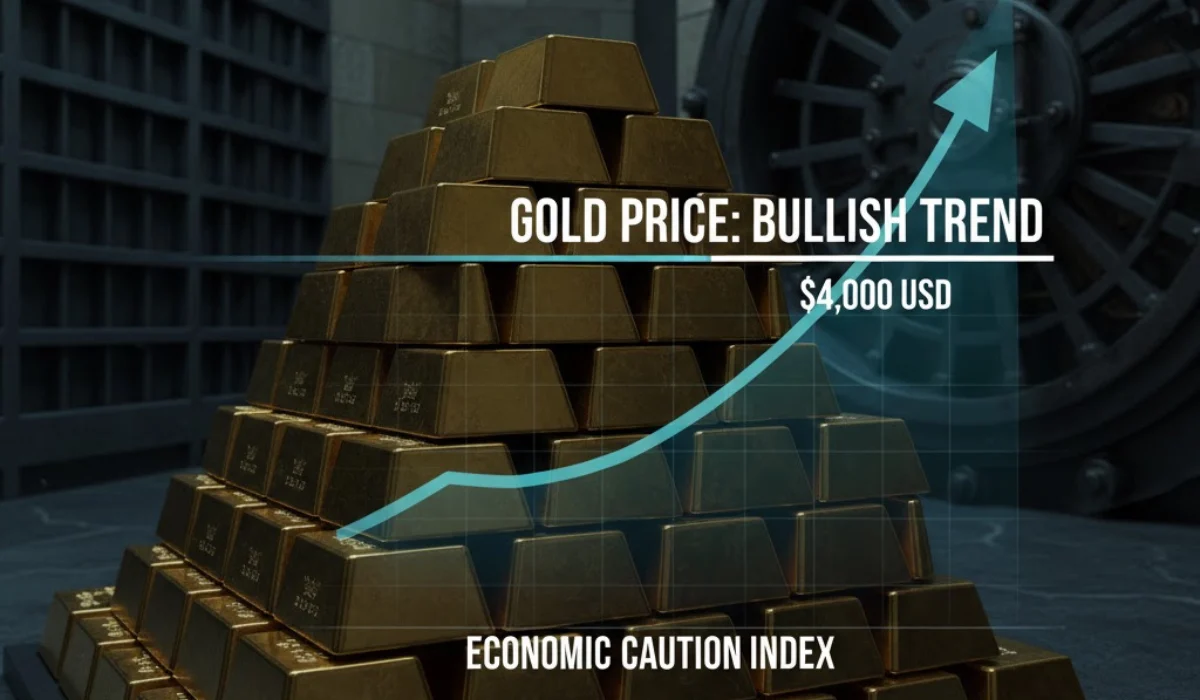Introduction
The global cryptocurrency market entered a turbulent phase on October 10, 2025, as prices for major digital assets plummeted in response to escalating trade tensions between the United States and China.
U.S. President Donald Trump, in a strongly worded statement on Truth Social, declared a 100% tariff on all Chinese imports—on top of existing duties—along with export controls on critical software, set to begin November 1 or earlier.
This aggressive policy shift came directly in retaliation to China's announcement of stringent export limits on rare earth minerals, essential components in electronics, semiconductors, and renewable energy technologies.
Market data from CoinMarketCap and other trackers revealed immediate fallout: Bitcoin, the benchmark cryptocurrency, fell as much as 10% intraday to below $110,000 before stabilizing around $111,800 by early October 11.
Ethereum, the second-largest asset by market capitalization, experienced even steeper losses, dropping over 15% to $3,792. The broader sell-off erased roughly $200 billion from the total crypto market value, pushing it down to $3.5 trillion and triggering $9 billion in leveraged position liquidations—the highest in months.
This event marks a stark reminder of how interconnected global trade policies are with speculative markets like cryptocurrencies, which have increasingly correlated with tech stocks and macroeconomic indicators.
As investors digest the implications, questions swirl about the duration of the downturn and potential ripple effects on blockchain infrastructure reliant on international supply chains.
Trump's Announcement: A Detailed Breakdown
President Trump's October 10 post on Truth Social laid bare his administration's frustration with Beijing's latest trade maneuvers. "It has just been learned that China has taken an extraordinarily aggressive position on Trade in sending an extremely hostile letter to the World
stating that they were going to, effective November 1st, 2025, impose large scale Export Controls on virtually every product they make, and some not even made by them," Trump wrote. He described the move as "absolutely unheard of in International Trade, and a moral disgrace in dealing with other Nations."
In response, Trump outlined a two-pronged U.S. countermeasure: a blanket 100% tariff increase on Chinese goods, layered atop current rates that already average 19% on many imports, and immediate export restrictions on "any and all critical software."
These controls target technologies integral to national security, including advanced algorithms and cybersecurity tools often sourced from or developed with Chinese components. The tariffs alone could affect over $500 billion in annual U.S. imports from China, spanning consumer electronics to industrial machinery.
This is not Trump's first foray into tariff warfare. During his initial term from 2017 to 2021, similar duties sparked a prolonged trade war that disrupted global supply chains and contributed to market volatility.
The 2025 iteration, however, arrives amid a more fragile economic recovery from inflationary pressures and supply bottlenecks exacerbated by prior restrictions on critical minerals.
Experts note that the timing—mere weeks before a planned U.S.-China summit in South Korea—signals a hardening of positions. "The U.S. is leveraging its consumer market power to force concessions,
but at the risk of alienating allies dependent on stable rare earth supplies," said a trade analyst at the Peterson Institute for International Economics. Trump's rhetoric also hinted at broader geopolitical aims, accusing China of a "plan devised by them years ago" to dominate key resources.
China's Rare Earth Export Controls: The Spark
At the heart of the dispute lies China's dominance in rare earth elements (REEs), a group of 17 metals crucial for high-tech applications. On October 9, Beijing's Ministry of Commerce expanded export restrictions to include five additional REEs—samarium, gadolinium, terbium, dysprosium, and lutetium—bringing the total under controls to 12 out of 17.
These elements are indispensable for manufacturing permanent magnets used in electric vehicle motors, wind turbines, and defense systems like fighter jets and missile guidance.
China produces about 70% of the world's REEs and processes over 90%, giving it unparalleled leverage. The new rules require foreign firms using Chinese REE-derived materials—such as those in semiconductors with even 0.1% heavy REE content—to obtain special export licenses. This extends Beijing's oversight to global supply chains, potentially delaying shipments and increasing costs for end-users.
Historically, China has wielded REEs as a strategic tool. In 2010, it halted exports to Japan during a territorial dispute, causing prices to spike 500%. More recently, restrictions on gallium, germanium, and graphite since 2023 have already strained U.S. chipmakers.
The 2025 expansion, timed ahead of U.S.-China talks, appears designed to bolster negotiating power. "By tightening controls, China ensures it can accelerate its own military and tech advancements while slowing competitors," observed Gracelin Baskaran of the Center for Strategic and International Studies.
The policy also mandates detailed tracing of REE usage in downstream products, raising compliance burdens for multinational corporations. While Beijing claims the measures are limited and include "licensing facilitation," analysts warn of short-term disruptions, particularly for U.S. defense contractors already on China's export control list.
Immediate Impact on Cryptocurrency Prices
The crypto market's reaction was swift and severe, amplifying signals from traditional equities where the S&P 500 dipped 2% and Nasdaq fell 2.7% on October 10. Bitcoin, often viewed as a hedge against fiat instability, instead behaved like a high-beta tech stock, breaching key support at $120,000 and testing $105,000 lows.
By 6:45 a.m. UTC on October 11, Bitcoin traded at $111,841, down 8.4% from the prior day, with its market cap contracting 8.12% to $2.23 trillion. Trading volume surged to $333.8 billion in 24 hours, indicating panic selling.
Ethereum fared worse, plunging 15.62% to $3,792, slashing its market cap by 13.81% to $456.97 billion. The drop erased gains from recent upgrades like the Dencun hard fork, which had enhanced scalability and reduced fees.
Stablecoins like Tether held steady, dipping just 0.1% to $1.00, underscoring their role as safe havens during volatility. However, altcoins bore the brunt: Binance Coin fell 6.6% to $1,094, while XRP cratered 22.85% to $2.33, reflecting sensitivity to regulatory whispers tied to trade disputes. Solana and other layer-1 tokens saw 15-30% declines, per CoinDesk data.
Liquidations totaled $9 billion, predominantly long positions, as overleveraged traders were wiped out when prices failed to rebound. This cascade effect deepened the rout, with open interest on derivatives exchanges dropping sharply.
Why Cryptocurrencies Are Vulnerable to Trade Tensions
Cryptocurrencies' linkage to U.S.-China frictions stems from their reliance on global hardware and energy infrastructure. Mining operations, which consume vast electricity and specialized chips, depend on REEs for GPU and ASIC production. China supplies 80% of the world's semiconductor fabrication equipment, and tariffs could hike costs for miners in North America and Europe.
Moreover, blockchain ecosystems intersect with affected sectors. Ethereum's proof-of-stake transition reduced energy demands, but smart contracts powering DeFi and NFTs often underpin tokenized assets in supply chain finance—now at risk from disrupted REE flows. "Trade barriers on critical software could stifle innovation in decentralized apps that use AI or cross-border data protocols," noted a report from Chainalysis.
Investor psychology plays a role too. Crypto's correlation with Nasdaq has hovered above 0.7 since 2023, per Bloomberg data, making it susceptible to risk-off events. Trump's tariff history—previous announcements in 2018-2019 triggered 20-30% BTC dips—fuels this pattern. Heightened uncertainty also prompts outflows from crypto ETFs, with BlackRock's iShares Bitcoin Trust seeing $500 million in redemptions on October 10.
Broader economic context amplifies the pain: U.S. inflation at 3.2% and Federal Reserve rate cut expectations have propped up crypto until now, but trade war fears could reignite stagflation worries.
Broader Market Reactions and Economic Implications
Wall Street echoed the crypto turmoil. Tech giants like Apple and Nvidia, heavy on Chinese supply chains, shed 3-5% as investors braced for higher component costs. The Dow Jones fell 1.8%, while commodities rallied—gold climbed 2% to $2,650 per ounce—as a flight to safety ensued.
Globally, the euro weakened 1.2% against the dollar, and Asian indices like the Hang Seng dropped 3.4% at open on October 11. REE prices spiked: dysprosium futures rose 15% overnight, per London Metal Exchange data, signaling supply squeeze fears.
For the U.S. economy, the tariffs risk adding 0.5-1% to CPI by mid-2026, according to Oxford Economics models, potentially delaying Fed easing. China, facing its own slowdown with GDP growth at 4.7% in Q3 2025, may retaliate with further mineral curbs or currency devaluation.
In crypto-specific terms, the crash highlights diversification needs. While Bitcoin's "digital gold" narrative persists, events like this underscore its beta to equities. Analysts at JPMorgan predict a 10-15% further pullback if tariffs proceed, but a swift diplomatic resolution could spark a 20% rebound.
Historical Context: Lessons from Past Trade Wars
U.S.-China trade skirmishes have repeatedly jolted markets. In 2018, Trump's initial 25% steel tariffs correlated with a 40% Bitcoin plunge from $19,000 to $3,200 over six months. Recovery followed Phase One deal signings in 2020, with BTC surging 300%.
Rare earth tensions echo 2010's Japan embargo, which quadrupled prices and spurred global diversification efforts. Post-2010, Australia and the U.S. ramped up mining, but China still holds 60% processing share as of 2025.
Today's dispute builds on 2023-2024 restrictions, where U.S. CHIPS Act investments—$52 billion for domestic fabs—aim to reduce reliance. Yet, full independence remains years away; MP Materials, America's largest REE producer, plans magnet output of just 1,000 tons by end-2025, versus China's 138,000 tons annually.
These precedents suggest crypto's resilience: post-2018 lows, the market cap grew from $100 billion to $3.5 trillion today. However, prolonged escalation could test that fortitude.
Expert Opinions and Future Outlook
Market observers remain divided. "This dip is a buying opportunity; tariffs are negotiating theater," posits CryptoSlate's analysis, citing historical rebounds. Conversely, FXStreet warns of "steepest declines in 2025" if controls expand to blockchain tech.
VanEck's Matthew Sigel eyes long-term upside, projecting Bitcoin at $644,000 if it captures gold's store-of-value role amid de-globalization. Short-term, support levels at $105,000 for BTC and $3,500 for ETH will be critical.
Diplomatic channels may cool tensions; a Trump-Xi meeting could yield concessions, like eased REE quotas for U.S. allies. Meanwhile, diversification gains traction: Lynas Rare Earths in Australia reported 20% production hikes, and U.S. firms eye recycling tech to reclaim 25% of REE needs by 2030.
Investors should monitor November 1 implementation and Q4 earnings for tariff pass-throughs. Volatility persists, but crypto's adaptive nature—evident in post-2022 bear market growth—offers cautious optimism.
Conclusion
President Trump's 100% tariff imposition and software export curbs have ignited a crypto market bloodbath, underscoring the sector's exposure to geopolitical flashpoints.
With Bitcoin and Ethereum leading the charge downward, the $9 billion liquidation wave serves as a stark warning for overleveraged positions. Yet, as history shows, such shocks often precede recoveries, provided trade dialogues progress.
Stakeholders from miners to DeFi developers must navigate this landscape with diversified strategies and vigilant policy tracking. As U.S.-China relations evolve, the crypto ecosystem's interplay with real-world economics will only intensify, shaping its trajectory in an increasingly fragmented global order.



